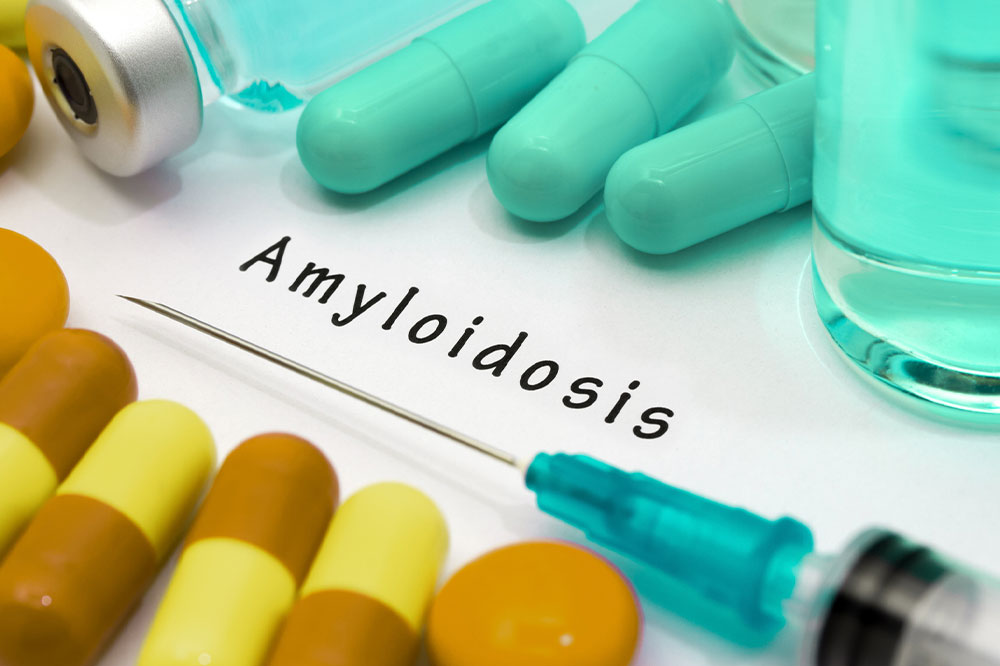
What is amyloidosis and how to deal with it
Amyloidosis leads to organ malfunction due to the buildup of an abnormal protein called amyloids in them. It is not common, and nearly 4000 people are diagnosed with the condition each year. Amyloidosis is an extremely serious disease as it can cause multiple organ failures if it is not diagnosed and treated on time. The following article lists the types of amyloidosis, its causes, symptoms, risk factors, and various treatment options.
Types and causes
The type of amyloidosis is based on its cause as mentioned below:
AL amyloidosis
It is also called immunoglobulin light chain amyloidosis, which is caused due to an abnormality in certain plasma cells found in the bone marrow. These produce light chain proteins that enter the bloodstream, leading to amyloidosis deposits in the heart, kidneys, liver, and nerves.
AA amyloidosis
This is typically caused due to inflammatory conditions like rheumatoid arthritis, and it mostly affects the kidneys, liver, and spleen.
Familial amyloidosis
This is hereditary and it tends to occur when a protein, called transthyretin (TTR), made by the liver becomes abnormal.
Wild-type amyloidosis
This type occurs when the TTR protein is normal, but for some reason, it produces amyloid. It typically targets the heart and affects men aged over 70.
Localized amyloidosis
This occurs due to the local production of immunoglobulin light chains that have not originated from bone marrow. Localized amyloidosis is typically seen in the bladder, skin, throat, and lungs.
Signs and symptoms
The signs and symptoms usually depend on the organs affected by amyloidosis.
Kidneys
When amyloidosis affects the kidneys, it makes the urine appear foamy. Worsening of symptoms may cause decreased urine output or even kidney failure.
Liver
There may be changes in the liver enzymes and pain and swelling in the upper abdomen.
Heart
It can also cause irregular heartbeat or an enlarged heart due to an abnormal protein buildup.
Gastrointestinal tract
A patient can suffer from constipation and diarrhea if amyloidosis affects the GI tract. It can also result in GERD and macroglossia.
Thyroid gland
It may also cause non-cancerous swelling in the thyroid gland and other conditions like goiter.
Lungs
The patient may suffer from breathing problems.
Central nervous system
Patients may experience symptoms like numbness, balancing difficulties, weakness in arms and legs, peripheral neuropathy, and carpal tunnel syndrome.
It is important to note here that patients experiencing one or two symptoms mentioned above may not be diagnosed with amyloidosis. Exhibiting these symptoms collectively increases the possibility of the condition.
Risk factors
The following risk factors play a major role in increasing the chances of suffering from amyloidosis:
Age
Although an earlier onset might occur, most people suffering from this disease are typically aged between 60 and 70.
Other diseases
Infections and autoimmune diseases like arthritis.
Genetics
If a member of a family is suffering from amyloidosis, there are chances of the disease getting passed on to younger generations.
Dialysis
Patients undergoing dialysis due to kidney diseases are at more risk as it isn’t easy to remove large, abnormal proteins from the blood.
Diagnosis
The following diagnostic tests can help pinpoint the exact cause of the disease.
Laboratory tests
Simple blood and urine tests can diagnose protein profile, which may help detect amyloidosis at an earlier stage.
Biopsy
Examining a small amount of tissue can help find any amyloid proteins in the bloodstream. However, if this does not help, a bone marrow biopsy can help identify the type of amyloidosis.
Echocardiogram
Procedures such as echocardiograms can show the heart damage caused specifically by amyloidosis. Other imaging tests like an MRI and nuclear imaging can also help diagnose the disease.
Treatment
Some of these treatments that can cure or help manage amyloidosis are mentioned below:
Chemotherapy
Although chemotherapy is used for cancer treatment, it can also be used for treating amyloidosis. The procedure kills cells with abnormal proteins that are interfering with organs’ normal functioning. However, it also kills normal cells in the process, which may cause side effects. These side effects are often managed using parallel treatment options and lifestyle changes.
Targeted therapy
Like chemotherapy, targeted therapy destroys cells with abnormal proteins. However, they especially target specific proteins and genes that contribute to the development of amyloidosis, which causes fewer side effects.
Surgery
This may be used in combination with the above treatments to stop any further spread. Surgery can be used to remove the affected part of the organ, or one may undergo a complete transplant.
Bone marrow transplant
Bone marrow or stem cell transplantation may be done to replace plasma cells affected by amyloidosis. This helps produce blood with healthier blood cells.




